What Houses Say about Today’s Cuba
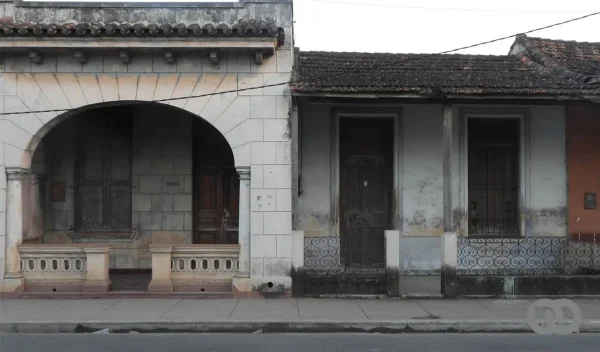
By Protected Person (El Toque)
HAVANA TIMES – In the second edition of La Edad de Oro magazine, published in New York, in August 1889, Jose Marti included an interesting article about different stages of human evolution based on the houses that different social groups lived in. He called the essay “La historia del hombre, contada por sus casas” (The History of Man, told by their houses). In 2023, Cuban homes have a lot to say, secrets to tell and struggles to fight.
“Right now, people live in big houses, with doors and windows, paved backyarks, and columned entrance gates: but humans didn’t live like this many thousands of years ago, nor were there 60 million inhabitants in a country like there is today. Back then, there weren’t any books to tell us things: stones, bones, shells, working instruments are what teach us how people used to live before.”*
The face of a grayish house, where you see the desire to form part of and the desire to not be a part of society, locked behind its walls. Lots of people sell their souls, consciences and home; others, live as best they can, surviving with whatever they have. Nowadays, we have books and science to learn about history and the thousand ways you can build a decent home. There’s a country with 11 million inhabitants with rich complexity of architectural and social history.

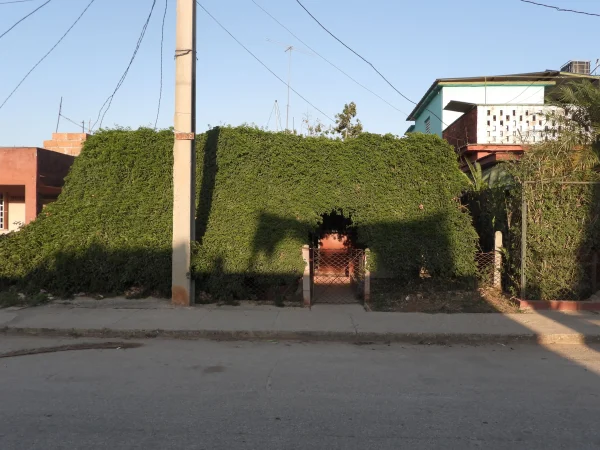
“People didn’t live like this in America back then, they would rather live in towns, and not as individual families: you can still see the ruins of inhabitants that would build mud walls in the shape of a circle, triangle, or square, or four circles inside each other: other indigenous peoples used to live in stone houses that were like little towns, and they were called houses/towns, because up to a thousand families would live there, who wouldn’t enter it through a door, like we do, but through the roof.”
“A home is not only a real estate asset, it’s also a form of spiritual consolidation,” Mario Benedetti once said. A person’s roots to a place depends on many factors, but the opportunity to have something “yours” is the most common. My house, your house, our family house… overcrowding. The number of inhabitants, insalubrity and poverty multiplies in areas hardest-hit by the economic crisis and especially by the housing crisis.
A dilapidated tenement in Havana in 2023 could only be compared to the Universe 25 experiment. Lots of homes located within a space where only one house used to exist in colonial times. Unsanitary, unhygienic conditions. Unprotected electricity cables, almost zero drinking water supply. Lots of collapses in recent years, families broken by local governments’ negligence. “Experiments” aren’t worth much when human life, health and dignity are on the line.

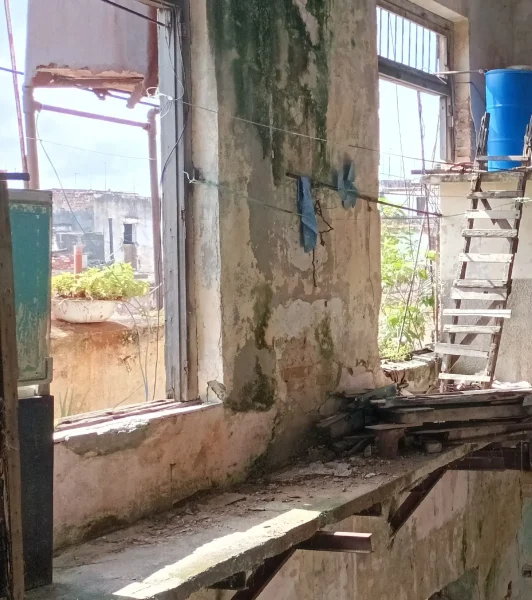
“[…] Those who are going to open the country are living in storage rooms, with branches for roofs, like in Neolithic times: on the banks of the Orinoco River, in South America, the indigenous peoples live in lake cities, just like they did hundreds of centuries ago around Switzerland’s lakes.”
She gets up, looks at the camera, smiles and hurries inside. She hates photos, although she has a beautiful smile. A 70-something year old woman with all of her teeth intact. She slipped away, but she left a testimony of her solitude: a house cut off from her neighbors by a short bridge made out of steel sheets. A bridge to cross the river that dried out, half a century ago. A lakeside home without running water and a river that evaporated without permission.
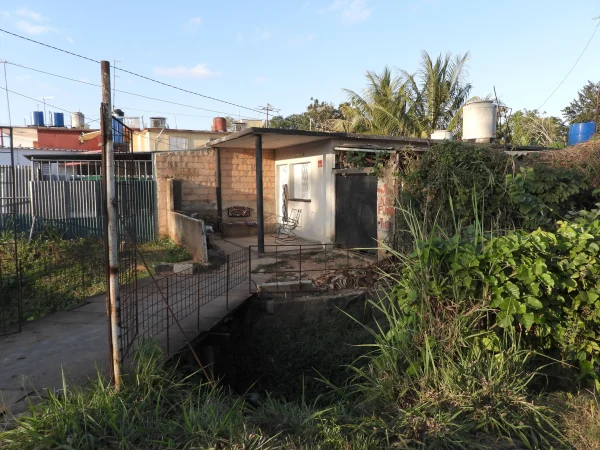
“There are people who live, like in France now, in the beautiful homes of the Iron Age, with its Eiffel Tower towering into the clouds: and then you have people who live like they did in the Stone Age, like the indigenous who used to build their homes with tree trunks, and would go out to kill birds in the woods with a flint and to catch jumping fish in the river.”
There is an analogy between people who want solid ground to build the foundations of their home. A solid base would mean peace of mind as they can put off the immediate future for as long as they can. However, procrastination is the most promising option for someone who doesn’t want this kind of roof over their head. TO SELL signs spoil house facades in aristocratic France, as well as in the most Pre-Colombian jungle.


“Assyrians used to live in those lands, and they were a warmongering people, who would build towers on their houses, to see the enemy from far away, and their towers were battlements, so they could shoot their arrows safely. They didn’t have windows, but light would come in through the roof. Stones sculpted into some mysterious figure were placed at doorways, such as a bull with a human head, or a head with wings.”
Feeling harassed is a common sentiment. There is no heed to fraternal reason when a house is in the middle and there is no written will. You’ll see two front doors to the same house. Flaws that benefit only one won’t be fixed. Blood isn’t always thicker than water. A single tower that is inhabited by enemies that take turns every day to play the shameful role of victim and abuser.
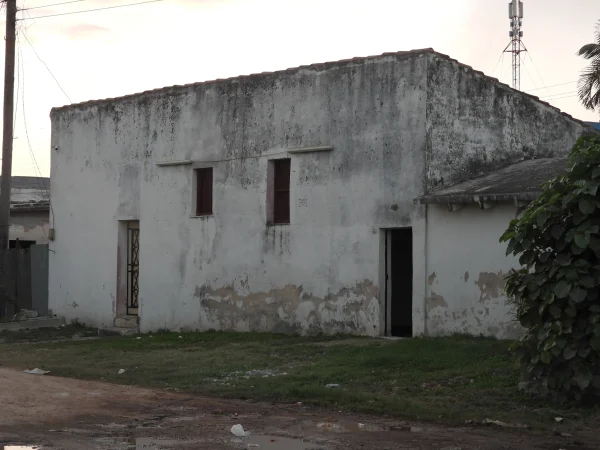
“Now, people around the world know each other better and visit one another: every country has its own way to build houses, depending on whether it’s a hot or cold country, or one race or another; but it’s not the way houses are built that is new in cities, but the fact that every city now has Moorish, Greek, Gothic Byzantine, Japanese homes, as if the happy days have finally come when humans treat each other like friends, and join one another.”
Humans are both flesh and mind. They want the clearest sky above their head and peace and dignity to live their lives. A house, a home, the materialized space of possession that also make an individual a dignified human. Sometimes, it really is only a matter of a lock and key. When the Apostle fought for freedom for the Cuban people, he never thought that freeing himself of preconceptions and fear would be the hardest part.
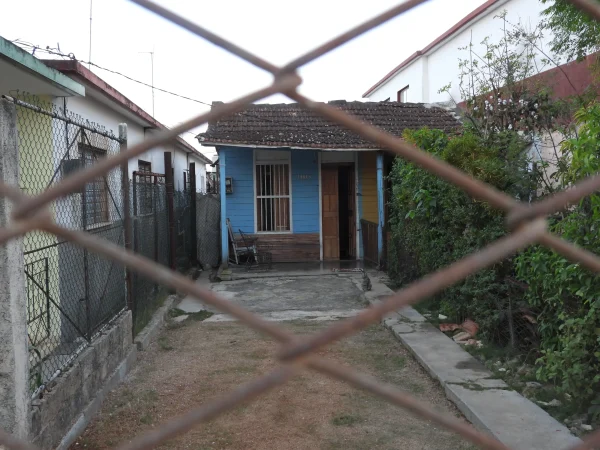
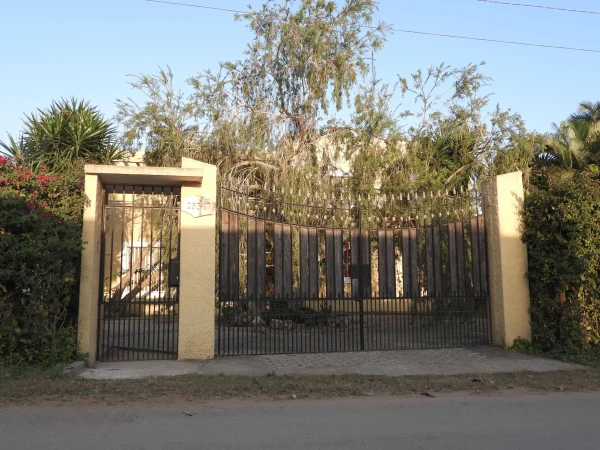
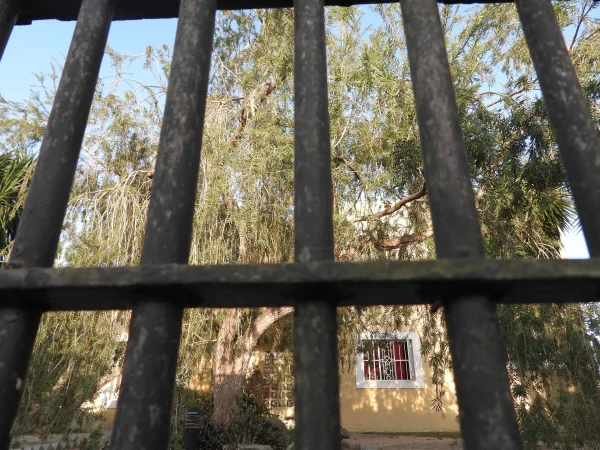
*Quotes belong to “The history of man, told by their houses,” La Edad de Oro, 1889.





